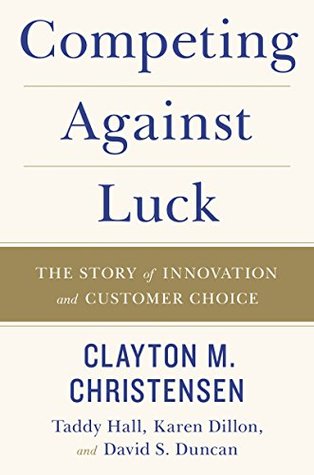More on this book
Community
Kindle Notes & Highlights
the idea that only quantitative data ...
This highlight has been truncated due to consecutive passage length restrictions.
Data has the same agenda as the person who created it, wittingly or unwittingly.
equal investments to determine what data should be created in the first place.
What dimensions of the phenomena should we collect data on and what dimensions of the p...
This highlight has been truncated due to consecutive passage length restrictions.
Passive data needs active management.
Awareness of these fallacies is the first step toward preventing them
doing so on an ongoing basis requires constant vigilance and intervention.
absent a clear understanding of the job the customers were hiring that product to do, “there was simply no way to differentiate which features were the right ones.
‘what problem did the customer really want solved.’”
They hired TurboTax to get their taxes done. Period.
How can a leader consistently rally his team about such a challenging goal—and keep them focused?
the organization is so focused on customers’ jobs that it allows itself to operate like a “network of start-ups” in which small teams launch new product pilots with minimal senior-level approval because they are so clearly aligned with jobs.
four categories of clear benefit:
Enable distributed decision making with clarity of purpose—employees
Align resources against what matters most—and
Inspire people and unify your culture
Measure what matters mos...
This highlight has been truncated due to consecutive passage length restrictions.
You can’t innovate to the broad goal
but you can innovate around the very specific circumstances
The more you understand about the job, the better you will connect to it internally.
A leader has to count on employees up and down the company’s ranks to make the right choices in everyday decisions. Those choices will determine a company’s real strategy.
If that culture has formed around the job, people will autonomously do what they need to do to be successful.
clearly defined job spec that everyone understands can serve the same purpose—a focal point for employees to make the right decisions without being told specifically what to do each time.
possible.”
1. Jobs Theory helped Deseret thrive in a challenging time for print media by focusing on the content customers were seeking to hire rather than being like other news outlets (and shifting competition away from televised, social, and digital media).
2. Reorganized and shifted their culture, bringing in new talent with shared beliefs that strengthened their ability to deliver in the job to be done.
3. Deseret tapped into a larger market with the jobs focused business than was possible with their previous product focused business.
the organizing unit in a start-up is the customer’s job.
The risk is that managers frame their task as efficiently executing established internal processes rather than effectively resolving customers’ Jobs to Be Done.
successful organizations we’ve studied reveal a very different orientation: a focus on the core customer job as the defining and aligning organizational principle of the enterprise.
Successful organizations pursue operational efficiency without compromising the customer Job to Be Done.
What are our customers hiring us to do?’ We don’t argue about that.”
mission statements, a well-crafted statement of the jobs a company exists to solve
An organization explicitly focused on a clearly defined job enjoys four key benefits:
not everything that motivates us is a Job to Be Done.
First, if you or a colleague describes a Job to Be Done in adjectives and adverbs, it is not a valid job.
A well-defined Job to Be Done is expressed in verbs and nouns—such
Second, defining a job at the right level of abstraction is critical to ensuring that the theory is useful.
if the architecture of the system or product can only be met by products within the same product class, the concept of the Job to Be Done does not apply.
If only products in the same class can solve the problem, you’re ...
This highlight has been truncated due to consecutive passage length restrictions.
The candidates to do the job are all from different product categories; and our rule of thumb is that this is the right level of abstraction.
This isn’t a job, it’s a technical specification.
I need to go up to a higher level of abstraction in order to discover a job.
We can see that this is a Job to Be Done and not a technical specification or requirement. We know this because the alternatives of things to hire to get the job done come from very different categories of products and services.


